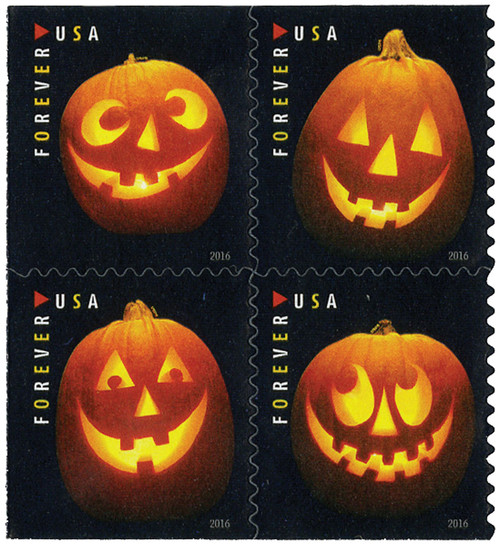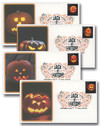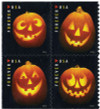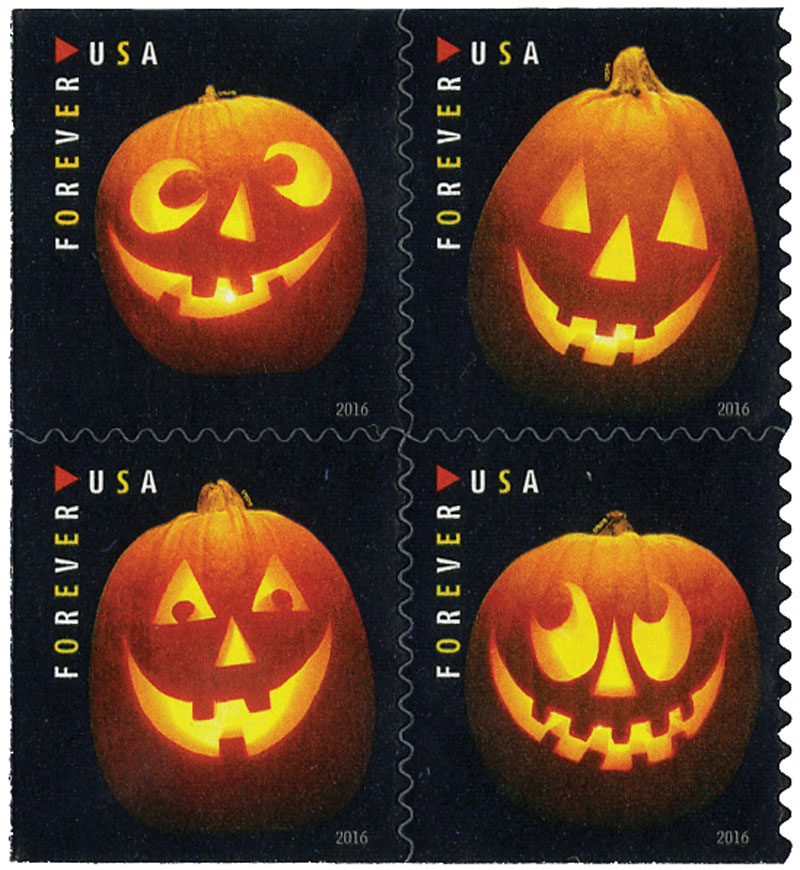
# 5137-40 - 2016 First-Class Forever Stamp - Jack-O'-Lanterns
Printed by: Banknote Corporation of America
Method: Offset, Microprint
Self-Adhesive
Happy Halloween!
Samhain (Old Irish for “summer’s end”) is often considered to be one of the oldest precursors to Halloween. It’s a traditional Gaelic festival first documented around the 10th century. It is believed modern Jack-o’-lanterns were inspired by a Samhain custom. People would hollow out turnips and carve faces into them to use as lanterns at night.
Samhain was a festival to prepare for winter. It lasted from sunset on October 31st to sunset on November 1st. Huge bonfires were lit as a cleansing ritual, crops were harvested and stored, and animals were moved to winter pastures. It was a celebration to hold people through the long, cold days to come.
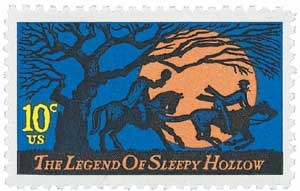
Samhain was also believed to be a day when the barrier to the otherworld could be crossed by fairies, spirits, or souls of the dead. Although some spirits were good or the souls of loved ones, others were evil and needed to be warded off. It was said that dressing in disguise and mimicking a spirit would prevent it from harming you. Some of these disguised people went door-to-door singing or reciting verses in exchange for food. Samhain was originally observed in Ireland, Scotland, and the Isle of Man. But its practices have since evolved and spread to other countries around the world.
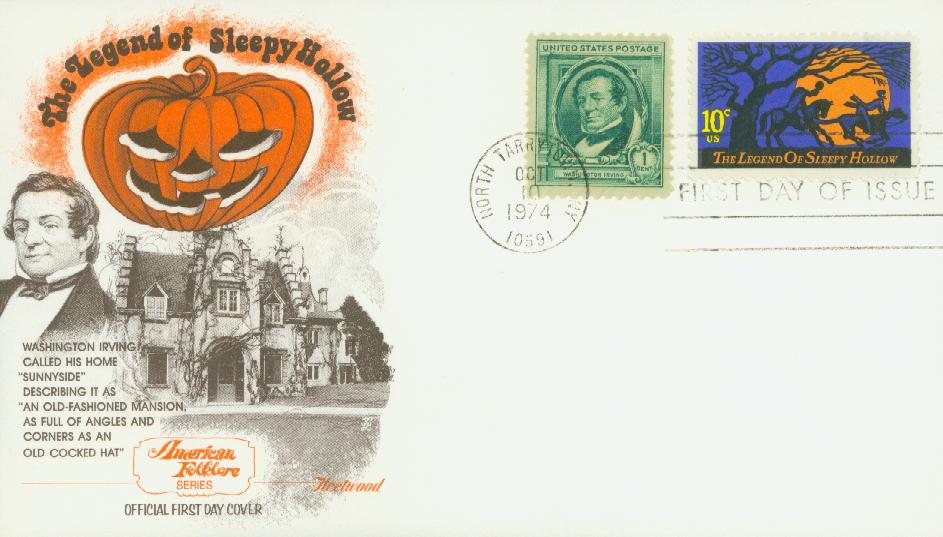
Christian practices also play a significant role in the history of Halloween. November 1 is All Saints Day and November 2 is All Souls’ Day. It has long been common practice to hold vigils the night before these holy days, so October 31 became known as All Hallows’ Eve. The term “Allhallowtide” was first used to describe the season in 1471.
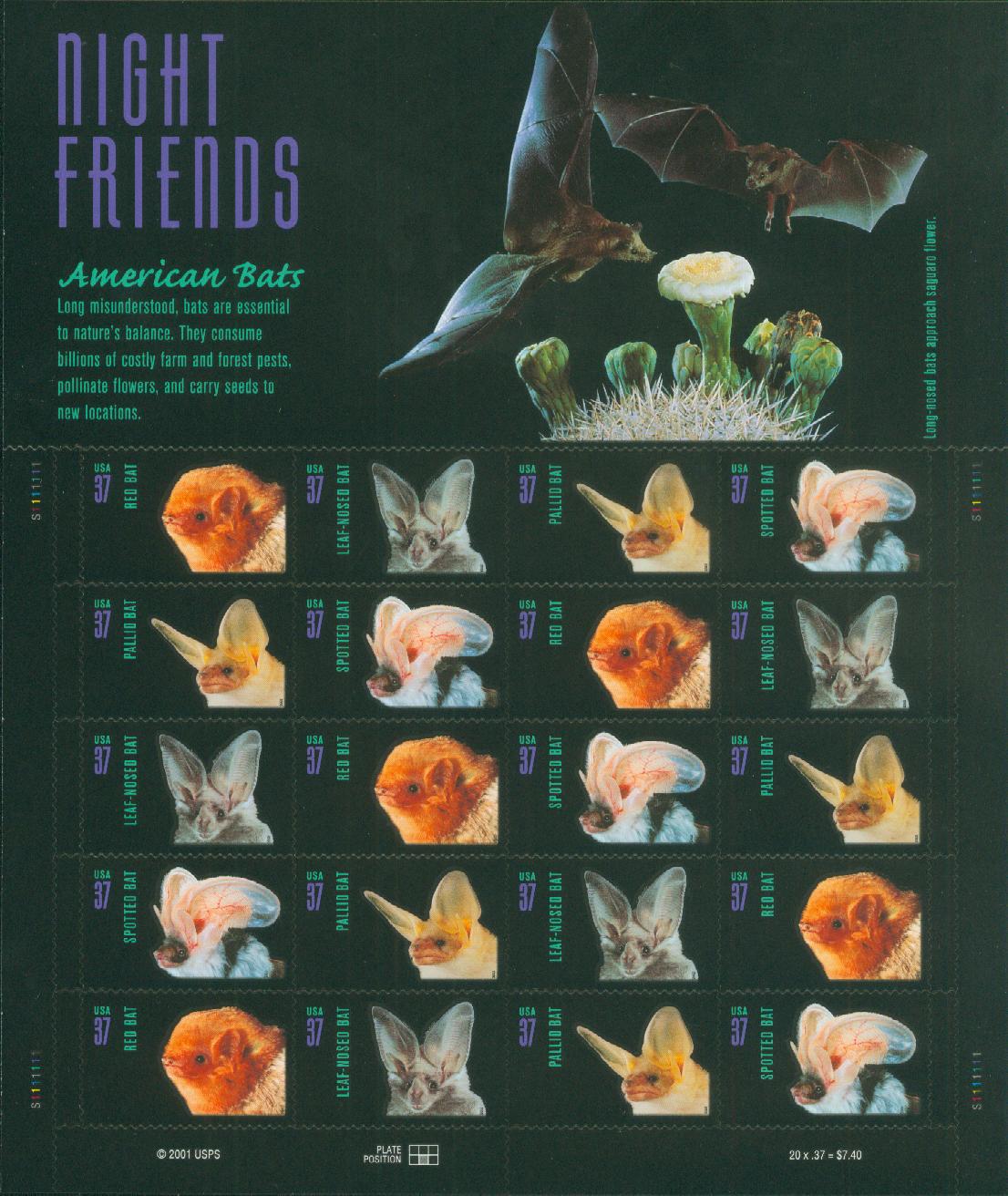
It was said the boundary between the living and the dead thinned during this three-day period. Some thought they needed to disguise themselves to avoid being recognized by a wayward soul – one possible origin of Halloween costumes. In Poland, people were taught to pray aloud when walking at night to comfort the souls of the dead. Some believed that Jack-o’-lanterns represented souls trapped in purgatory.
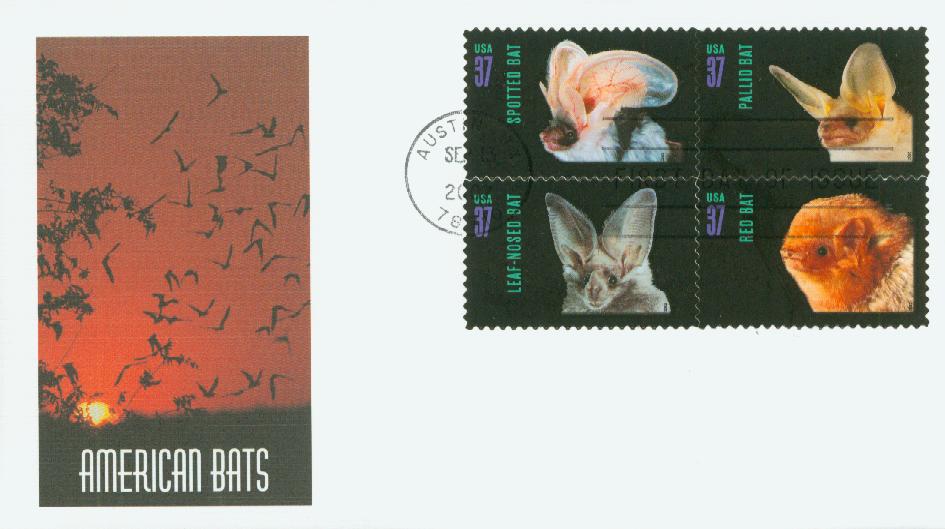
November 1st is All Saints’ Day, which celebrates all dead saints and martyrs, while November 2nd is All Souls’ Day and includes all Christians who have died. Different countries have different traditions to celebrate these days. Some prepare offerings of food for their loved ones’ souls. Others lay flowers or wreaths on graves and light candles in the cemetery. Allhallowtide not only remembers the dead but celebrates their lives as well.
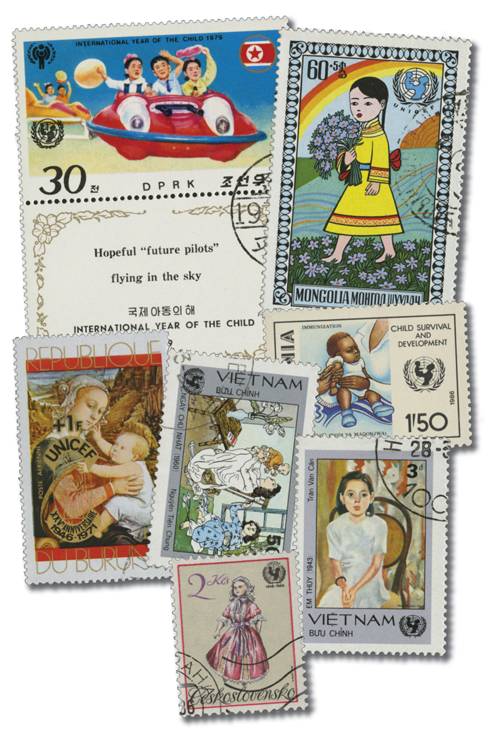
According to most accounts, Halloween spread into North America in the 19th century largely due to an influx of Irish and Scottish immigrants. It soon became a major holiday throughout the country and by the start of the 20th century was celebrated coast to coast
How did Jack-o’-lanterns get their name?
The name come from an old Irish folk tale told at Halloween. “Stingy Jack” was a notorious drunk and trickster. Satan heard about Jack’s deeds (rumored to be more evil than his own) and went to see for himself. When Jack met Satan, he asked for one last drink before Satan took his soul. Satan agreed and the two went drinking at a local pub. When it came time to pay, Jack convinced Satan to transform into a silver coin. Instead of paying, Jack put the coin in his pocket next to a crucifix, trapping Satan. Jack only released the devil after he promised not to claim Jack’s soul for 10 years.

After a decade, Satan returned and Jack requested to eat one last apple before going to hell. Satan climbed a nearby apple tree and Jack trapped him again. This time, Jack made Satan agree never to take his soul. When Jack died, he was denied entry to heaven due to his evil deeds. Satan kept his promise and did not take Jack’s soul either. Instead, he threw him an ember from the fires of hell, which Jack put into a hollow turnip to light his way. He was sentenced to roam the Earth for eternity seeking a place to rest. The Irish nicknamed him “Jack of the lantern.” Each Halloween the Irish carved grizzly faces into hollow turnips to ward off the ghost of Stingy Jack.
Printed by: Banknote Corporation of America
Method: Offset, Microprint
Self-Adhesive
Happy Halloween!
Samhain (Old Irish for “summer’s end”) is often considered to be one of the oldest precursors to Halloween. It’s a traditional Gaelic festival first documented around the 10th century. It is believed modern Jack-o’-lanterns were inspired by a Samhain custom. People would hollow out turnips and carve faces into them to use as lanterns at night.
Samhain was a festival to prepare for winter. It lasted from sunset on October 31st to sunset on November 1st. Huge bonfires were lit as a cleansing ritual, crops were harvested and stored, and animals were moved to winter pastures. It was a celebration to hold people through the long, cold days to come.

Samhain was also believed to be a day when the barrier to the otherworld could be crossed by fairies, spirits, or souls of the dead. Although some spirits were good or the souls of loved ones, others were evil and needed to be warded off. It was said that dressing in disguise and mimicking a spirit would prevent it from harming you. Some of these disguised people went door-to-door singing or reciting verses in exchange for food. Samhain was originally observed in Ireland, Scotland, and the Isle of Man. But its practices have since evolved and spread to other countries around the world.

Christian practices also play a significant role in the history of Halloween. November 1 is All Saints Day and November 2 is All Souls’ Day. It has long been common practice to hold vigils the night before these holy days, so October 31 became known as All Hallows’ Eve. The term “Allhallowtide” was first used to describe the season in 1471.

It was said the boundary between the living and the dead thinned during this three-day period. Some thought they needed to disguise themselves to avoid being recognized by a wayward soul – one possible origin of Halloween costumes. In Poland, people were taught to pray aloud when walking at night to comfort the souls of the dead. Some believed that Jack-o’-lanterns represented souls trapped in purgatory.

November 1st is All Saints’ Day, which celebrates all dead saints and martyrs, while November 2nd is All Souls’ Day and includes all Christians who have died. Different countries have different traditions to celebrate these days. Some prepare offerings of food for their loved ones’ souls. Others lay flowers or wreaths on graves and light candles in the cemetery. Allhallowtide not only remembers the dead but celebrates their lives as well.

According to most accounts, Halloween spread into North America in the 19th century largely due to an influx of Irish and Scottish immigrants. It soon became a major holiday throughout the country and by the start of the 20th century was celebrated coast to coast
How did Jack-o’-lanterns get their name?
The name come from an old Irish folk tale told at Halloween. “Stingy Jack” was a notorious drunk and trickster. Satan heard about Jack’s deeds (rumored to be more evil than his own) and went to see for himself. When Jack met Satan, he asked for one last drink before Satan took his soul. Satan agreed and the two went drinking at a local pub. When it came time to pay, Jack convinced Satan to transform into a silver coin. Instead of paying, Jack put the coin in his pocket next to a crucifix, trapping Satan. Jack only released the devil after he promised not to claim Jack’s soul for 10 years.

After a decade, Satan returned and Jack requested to eat one last apple before going to hell. Satan climbed a nearby apple tree and Jack trapped him again. This time, Jack made Satan agree never to take his soul. When Jack died, he was denied entry to heaven due to his evil deeds. Satan kept his promise and did not take Jack’s soul either. Instead, he threw him an ember from the fires of hell, which Jack put into a hollow turnip to light his way. He was sentenced to roam the Earth for eternity seeking a place to rest. The Irish nicknamed him “Jack of the lantern.” Each Halloween the Irish carved grizzly faces into hollow turnips to ward off the ghost of Stingy Jack.

